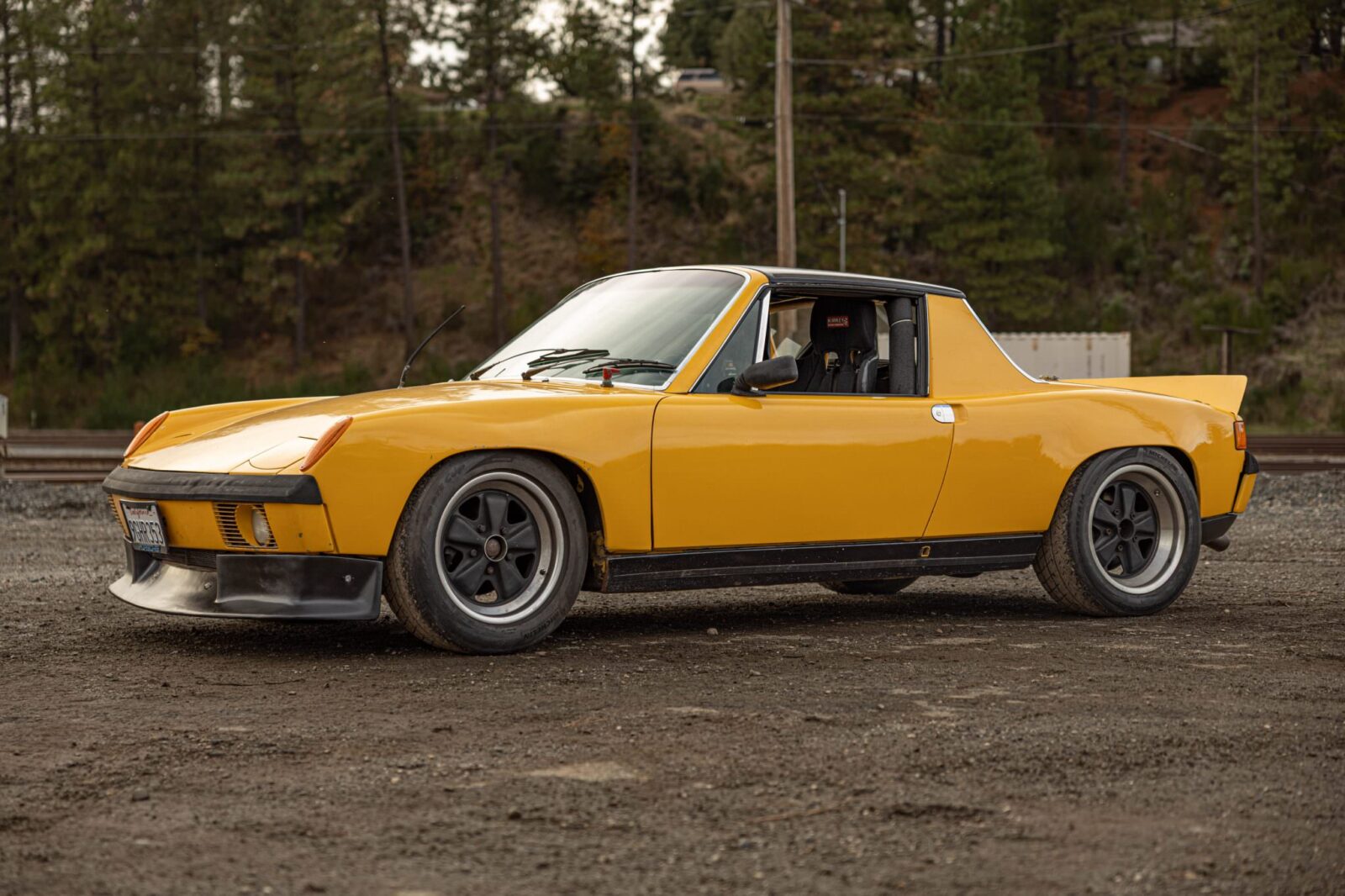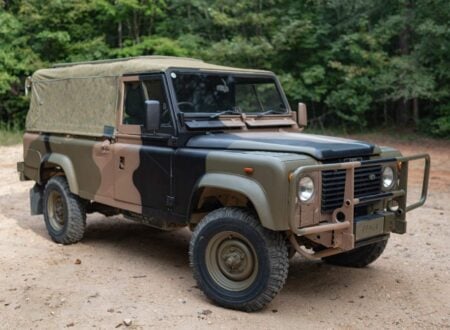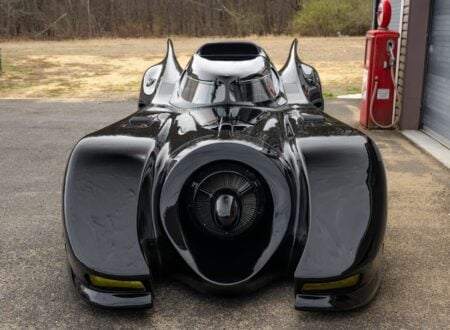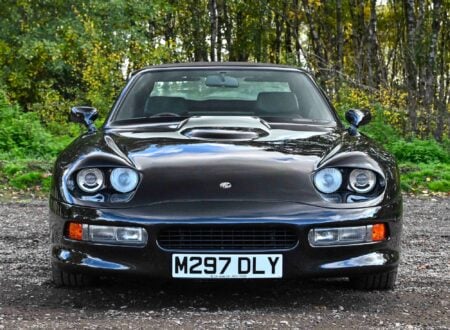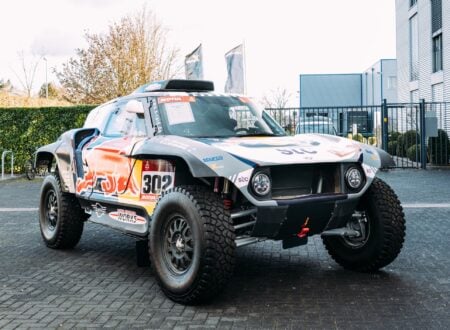This is a 1971 Porsche 914 that now benefits from a raft of upgrades, the most significant of which is the new turbocharged flat-six and its matching 5-speed manual transmission.
The car also has major suspension and brake upgrades to better handle its now vastly-improved power output. Although the car is set up for track use it is road legal in California and it’s being sold with road registration.
Fast Facts: A Flat-Six-Powered Porsche 914
- This 1971 Porsche 914 has been heavily modified with the fitment of a turbocharged flat-six built from a 3.0 liter case and 3.3 pistons, paired with a 915 5-speed manual and Quaife limited-slip differential. It is configured for track work yet remains road legal in California with a current title.
- The original Porsche 914 was conceived in the mid 1960s as a joint Porsche-Volkswagen project to replace the Porsche 912 and the VW Type 34 Karmann Ghia. It debuted in 1969 as a mid engined, targa topped two seater with modest front and rear luggage bays and a steel unibody.
- Standard 914s used MacPherson struts with torsion bars up front and semi trailing arms with coils at the rear, along with four wheel disc brakes. Engines ranged from 1.7 to 2.0 liter flat fours in the 914/4 and a 2.0 liter 911T flat six in the 914/6, with manual gearboxes and rare Sportomatic (automatic) units.
- This yellow 914 now runs G body 911 suspension parts, adjustable Bilstein rear coilovers, Sway A Way torsion bars, reinforced mounts, a larger front sway bar and 911SC vented discs. It carries track focused additions including a roll cage, fuel cell, intercooler, oil cooler, race seats, harnesses and lightweight Fuchs-style wheels.
History Speedrun: The Porsche 914
The Porsche 914 was developed in the mid-1960s as a joint solution to two separate problems. Porsche needed a new entry-level model to replace the 912, while Volkswagen wanted a modern sports coupe to succeed the Type 34 Karmann Ghia at the top of its range.
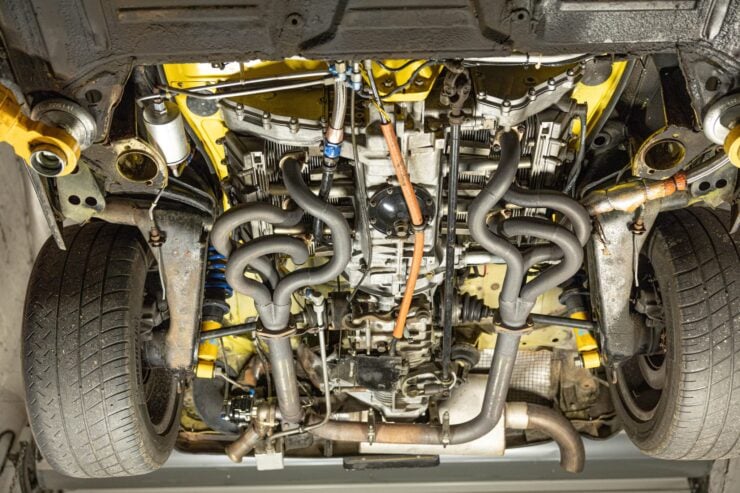

Under an existing engineering agreement, Volkswagen had contracted Porsche to develop a shared car, designated the Type 914, that could serve as both an affordable, entry-level Porsche and a high-end VW halo model. Development began in 1966, a full-size clay model was completed in 1967, and the first prototype ran in March 1968. The production 914 debuted at the Frankfurt Motor Show in autumn of 1969 as Germany’s first mass-production, mid-engined sports car.
The car’s styling and engineering were developed in-house – Porsche design chief Ferdinand Alexander “Butzi” Porsche and his studio were responsible for the overall concept, with the final production design penned by staff designer and body engineer Heinrich Klie.
The result of all this was a low slung, Targa-topped two-seater with a removable center roof panel, an integrated roll hoop, modest front and rear luggage compartments, and a mid-mounted powertrain positioned ahead of the rear axle for optimal balance.
The choice to use a targa top and an integrated roll bar mirrored what was happening on the main Porsche 911 production line. The main reason was the fear that the United States, Porsche’s most important export market by far, was on the cusp of banning convertible cars – thanks in no small part to the book Unsafe at Any Speed by Ralph Nader (yes, that Ralph Nader).
The 914 combined Volkswagen running gear with Porsche chassis design know-how. All versions used a steel unibody and a rear mid-engine, rear-wheel-drive layout. The front suspension consisted of MacPherson struts, lower A-arms, and longitudinal torsion bars, while the rear used independent semi-trailing arms with coil springs.
Four-wheel disc brakes were standard, a bit of a novelty at the time, the six-cylinder cars used larger, vented front discs and five-lug hubs. Power went through a 5-speed manual gearbox derived from the 911’s Type 901 transaxle, reconfigured for mid-engine use, with early “tail-shifter” linkage later replaced by a crisper “side-shifter” design from 1973 onwards. The Sportomatic automatic box was offered only on a small number of six-cylinder 914/6 models, and not on the regular four-cylinder 914/4.


There were two basic model lines in the 914 series, the 914/4 and the 914/6. The 914/4, built largely by Karmann, used Volkswagen’s air-cooled Type 4 flat-four in three displacements over the model run – an injected 1.7 liter with 80 bhp, a 1.8 liter with 85 bhp (using Bosch L-Jetronic on U.S. cars), and a 2.0 liter making 100 bhp with Bosch D-Jetronic injection.
The 914/6, completed and sold directly by Porsche, was powered by a 2.0 liter air-cooled flat-six from the 911T, rated at 110 bhp with Weber carburetors and revised internals. Kerb weights ranged roughly from 940 to just under 1,000 kgs (about 2,070 to 2,190 lbs), with 0 to 100 km/h (0 to 62 mph) times from 13.3 seconds for the 1.7 liter to 8.7 seconds for the 914/6, and top speeds between 178 and 207 km/h (111 to 129 mph) depending on the engine.
In Europe the 914/4 was sold through Volkswagen dealers as “VW-Porsche,” while the 914/6 models were given full Porsche badging (and pricing). All of that said, in North America where brand separation was more sensitive, both versions were badged and marketed purely as Porsches.
After Volkswagen chairman Heinrich Nordhoff died and his successor Kurt Lotz renegotiated the joint venture between VW and Porsche, chassis pricing increased, leaving the 914/6 only marginally cheaper than a 911T and undermining its reason for existing. As a result, the 914/6 variant was discontinued after a little over 3,300 units were sold, while the 914/4 cars carried the line through to the end of production.
Despite oft-cited purist skepticism about its VW roots, the 914/4 was a strong seller, particularly in the U.S. Its combination of mid-engine handling, wind-in-the-hair driving, and relatively attainable pricing helped it become Porsche’s best-selling model of its era, with total 914 production reaching around 118,978 cars between 1969 and 1976.
The 914 won Motor Trend’s Import Car of the Year award for 1970 which no doubt helped its sales, although some criticized its value versus similarly priced sports cars – like the Datsun 240Z, Triumph TR6, MGB, and Alfa Romeo Spider.
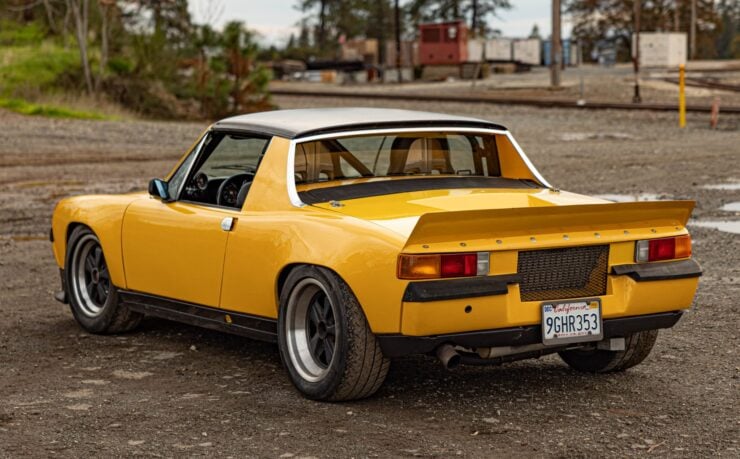

Production ended in 1976, with the front-engined Porsche 924 taking over as Porsche’s entry-level model the following year. In retrospect, the 914 is recognized as Porsche’s first volume produced mid-engined road car and a crucial evolutionary step toward later models like the Boxster and Cayman.
The 1971 Porsche 914 Shown Here
This 1971 Porsche 914 started life as a regular four-cylinder car before being re-engineered by Richard Clewett of Clewett Engineering with a turbocharged Porsche 911 flat-six built from a 3.0 liter case and 3.3 liter pistons. It’s finished in yellow paint with a black removable Targa top, and the exterior shows typical signs of age and some track use.
It has a front air dam, rear spoiler, vented rear panel, a fuel cell, air-to-air intercooler, and an oil cooler. Inside you’ll find a roll cage, a MoMo steering wheel, Kirkey race seats, and five-point harnesses.
Underneath, the car has G-body 911 suspension parts and a comprehensive set of upgrades including adjustable Bilstein rear coilovers, Sway-A-Way torsion bars, reinforced mounting points, and a larger front sway bar. It’s fitted with 911SC vented rotors and calipers at all four corners, with Michelin Pilot Sport Cup tires on 16 inch Fuchs-style wheels.
The turbocharged flat-six is fitted with Elgin cams, dual-plug heads, and a 964-style intake, boosted by a Garrett turbocharger reportedly running 1 bar. The exhaust system includes headers and a custom setup with a wastegate dump.
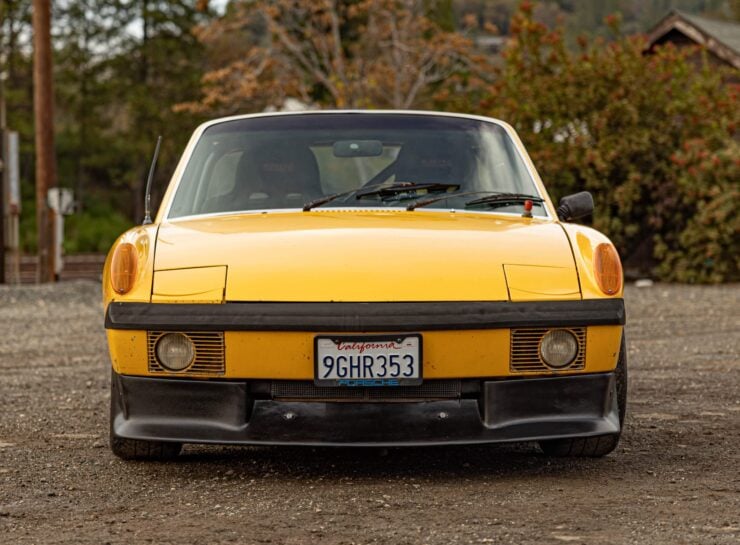

Power is sent back through a 915 5-speed manual gearbox fitted with a side-shift conversion and a Quaife limited-slip differential.
It’s now being offered for sale out of Meadow Vista, California with a California title and you can visit the listing here if you’d like to read more about it or register to bid.
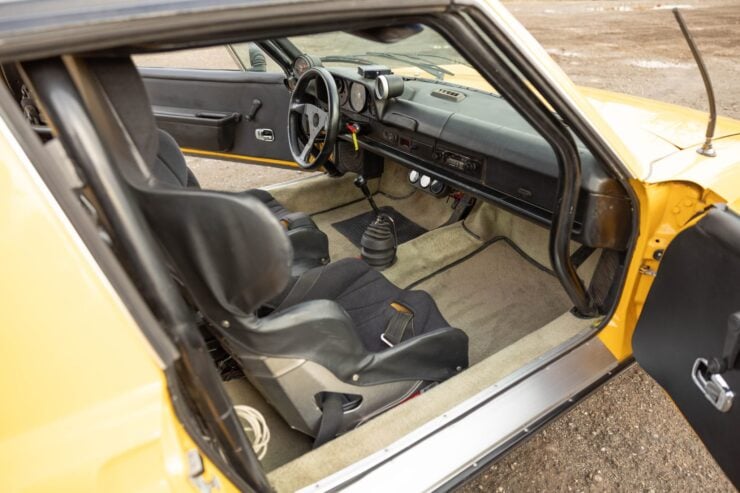
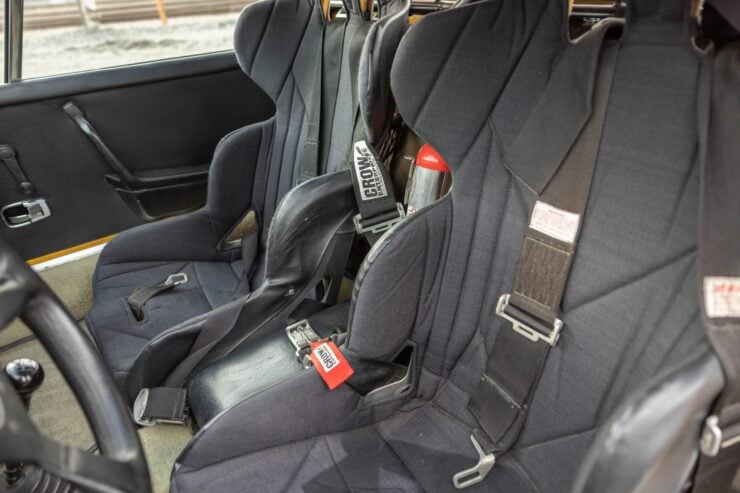

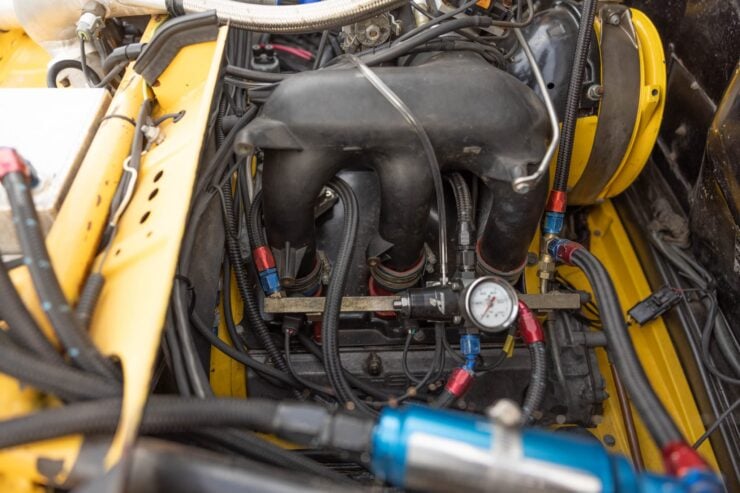


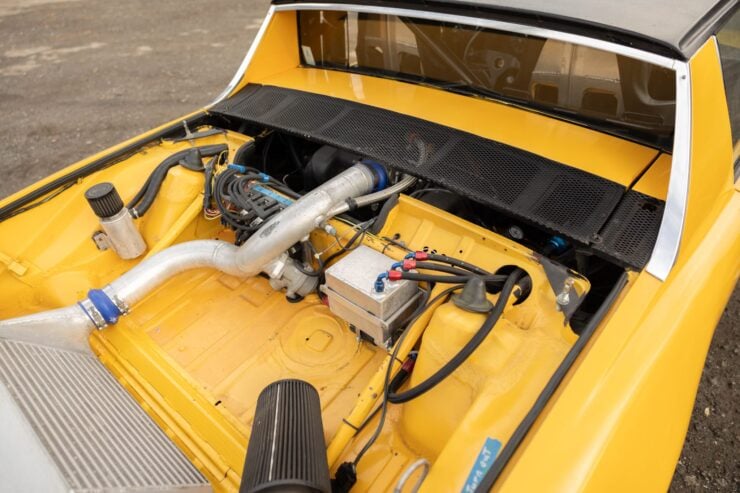
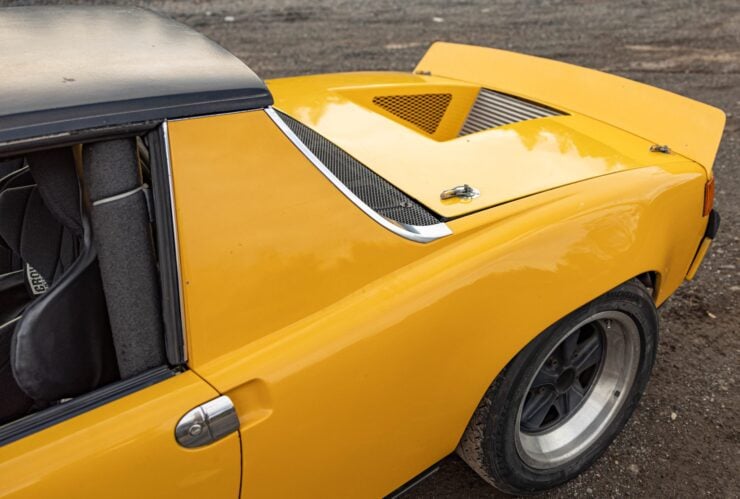
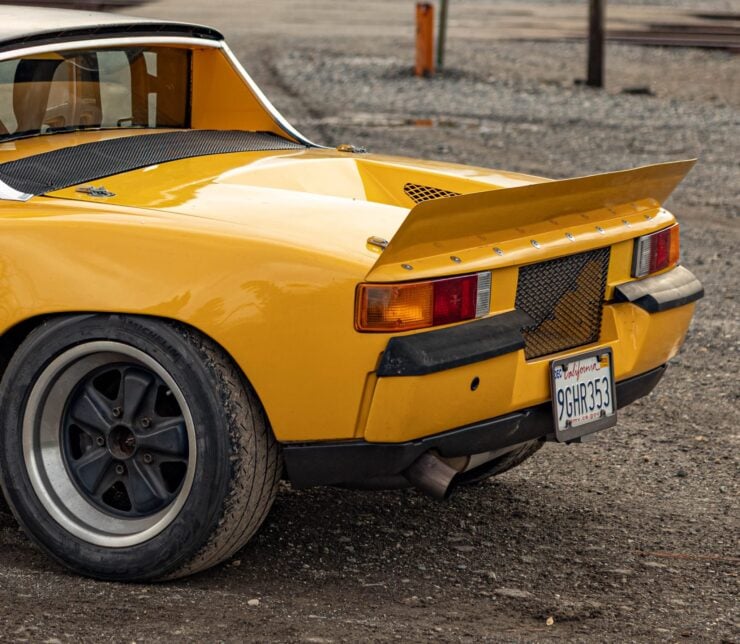

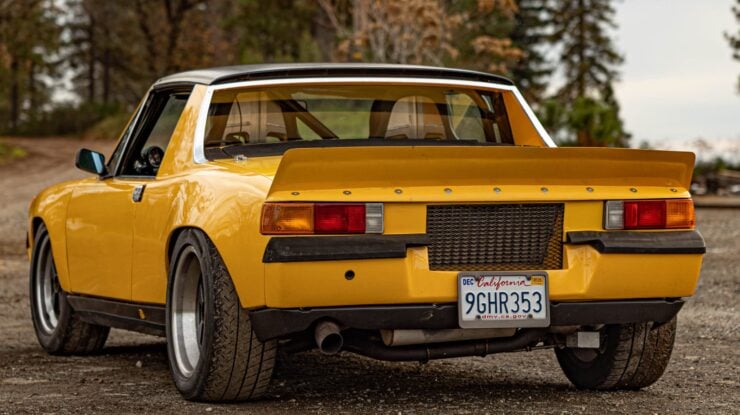


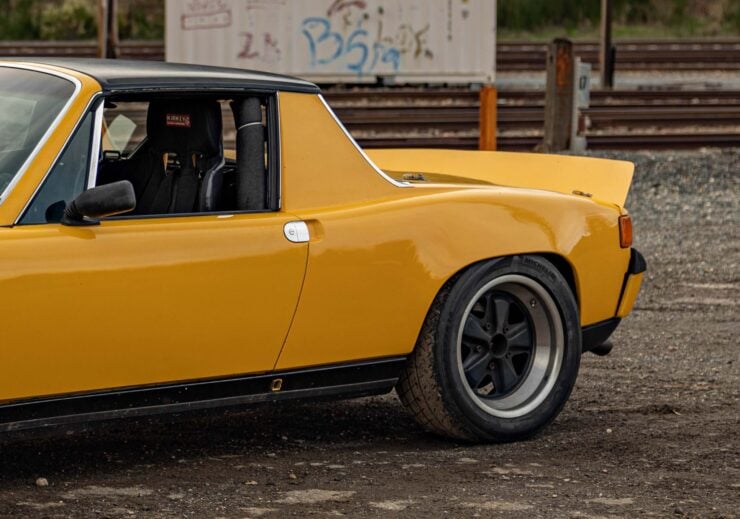
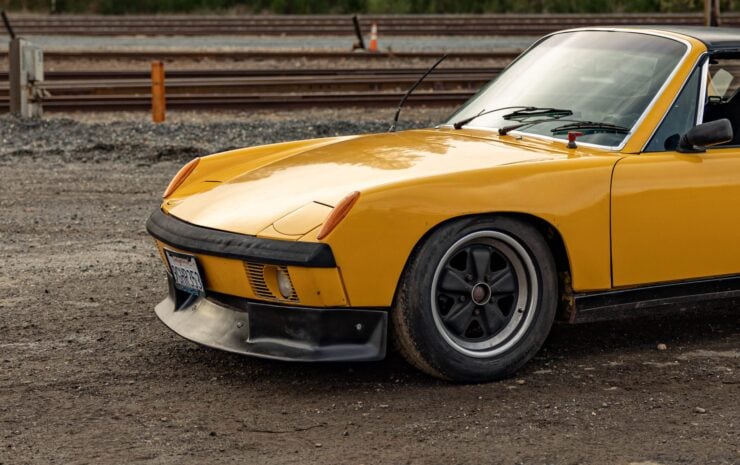

Images courtesy of Bring a Trailer

